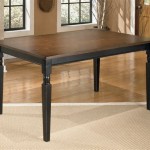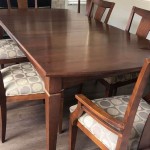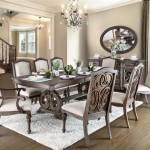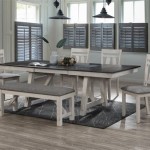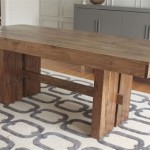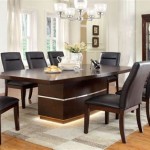Small Dining Room Storage Cabinets: Maximizing Space and Style
The dining room, regardless of its size, often serves as a central hub for meals, gatherings, and even work. Optimizing the available space is crucial, particularly in smaller dining areas. Small dining room storage cabinets offer a practical and aesthetically pleasing solution for decluttering and organizing essential items. These cabinets come in diverse styles, materials, and configurations, allowing homeowners to select options that seamlessly integrate with their existing décor while addressing their specific storage needs.
The primary challenge in a small dining room is to achieve a balance between functionality and visual appeal. Bulky furniture can overwhelm the space, making it feel cramped and uncomfortable. Strategically chosen storage cabinets, designed specifically for smaller areas, can effectively address this issue by providing dedicated storage without compromising the room's overall aesthetic. Before selecting a cabinet, it is essential to assess the intended purpose and the available space to ensure a suitable fit.
Understanding Storage Needs
Before embarking on the search for a small dining room storage cabinet, a comprehensive assessment of storage needs is paramount. Identify the items that require storage and categorize them based on frequency of use and size. Common items that often find a home in dining room cabinets include dinnerware sets, serving dishes, linens, silverware, glassware, and even less frequently used appliances like slow cookers or blenders. Consider the volume of each category to determine the required cabinet capacity. For instance, if the primary need is to store a large collection of dinnerware, a cabinet with ample shelving and adjustable configurations would be ideal.
Furthermore, think about items that are not strictly dining-related but could benefit from discreet storage in the dining room. This might include board games, craft supplies, or even office supplies if the dining room occasionally doubles as a workspace. Incorporating these considerations into the initial assessment will ensure that the chosen cabinet effectively addresses all storage requirements and contributes to a more organized and functional space.
Exploring Cabinet Styles and Materials
Small dining room storage cabinets are available in a wide array of styles, each contributing a distinct character to the room's overall ambiance. Traditional cabinets often feature ornate detailing, raised panel doors, and rich wood finishes, lending a sense of formality and elegance. Contemporary cabinets, on the other hand, typically emphasize clean lines, minimalist designs, and a focus on functionality. These cabinets often incorporate materials like glass, metal, and lighter wood tones, creating a more modern and airy feel.
Beyond traditional and contemporary styles, there are also transitional cabinets that blend elements of both, offering a versatile option that can complement a variety of décor schemes. The choice of material also plays a crucial role in the cabinet's aesthetic and durability. Solid wood cabinets are known for their longevity and classic appeal, while engineered wood options offer a more cost-effective alternative with similar visual characteristics. Metal cabinets provide a sleek and industrial look, while glass-fronted cabinets allow for showcasing decorative items while keeping them protected from dust. The selection should align with the existing décor and the desired level of maintenance.
Consider the hardware as well. Knobs and pulls can dramatically impact the cabinet's overall style. Opting for minimalist hardware can enhance a contemporary design, while ornate hardware can complement a traditional aesthetic. Color is equally important; a cabinet that contrasts sharply with the existing color scheme can create a visual focal point, while a cabinet that blends seamlessly can provide a more understated look. Careful consideration of these stylistic elements ensures that the chosen cabinet not only provides practical storage but also enhances the room's overall aesthetic appeal.
Maximizing Space with Clever Cabinet Design
In a small dining room, every inch of space counts. Selecting a storage cabinet with a clever design can significantly enhance the room's functionality without sacrificing precious square footage. Corner cabinets are an excellent option for utilizing often-neglected areas, providing ample storage in a space-efficient manner. Wall-mounted cabinets offer another space-saving solution, freeing up floor space and creating a more open feel. Consider the height of the cabinet as well. Taller, narrower cabinets can provide more vertical storage without taking up excessive floor space.
Interior features also play a crucial role in maximizing space. Adjustable shelves allow for customizing the storage configuration to accommodate items of varying sizes. Pull-out drawers provide easy access to items stored in the back of the cabinet, while built-in organizers can help to keep smaller items neatly arranged. Some cabinets even feature integrated lighting, which not only enhances visibility but also adds a touch of elegance. Look for cabinets with features that align with specific storage needs and organizational preferences.
The type of door also impacts the cabinet's functionality in a small space. Sliding doors require less clearance than hinged doors, making them a suitable option for tight spaces. Glass-fronted doors can create a sense of openness and allow for showcasing decorative items, while solid doors provide concealed storage for items that are best kept out of sight. Consider the placement of the cabinet in relation to other furniture and the flow of traffic within the room when selecting the door style. Ultimately, the goal is to choose a cabinet that maximizes storage capacity while minimizing its impact on the room's overall layout and functionality.
Functionality extends beyond just storage capacity. Consider cabinets with built-in features like wine racks or serving trays. These specialized storage solutions can further enhance the cabinet's utility and cater to specific dining needs. A cabinet with a built-in wine rack, for example, provides a convenient and stylish storage solution for wine bottles, while a cabinet with pull-out serving trays offers a practical surface for displaying appetizers or desserts.
Placement and Installation Considerations
The placement of a small dining room storage cabinet can significantly impact its functionality and aesthetic appeal. Before installation, carefully consider the room's layout, traffic flow, and existing furniture arrangement. Avoid placing the cabinet in areas that obstruct doorways or create bottlenecks. Opt for a location that is easily accessible and complements the room's overall design.
Consider the proximity to the dining table. Placing the cabinet close to the table can facilitate easy access to dinnerware, serving dishes, and other essential items during meals. However, ensure that the cabinet does not encroach on the surrounding seating area, making it uncomfortable for diners. Pay attention to the placement of electrical outlets as well. If the cabinet is equipped with integrated lighting or requires power for any other reason, ensure that it is positioned within reach of a conveniently located outlet.
Installation requirements vary depending on the type of cabinet. Wall-mounted cabinets typically require more extensive preparation than freestanding cabinets. It is essential to ensure that the wall is structurally sound and capable of supporting the cabinet's weight. Use appropriate mounting hardware and follow the manufacturer's instructions carefully. For freestanding cabinets, ensure that the floor is level and that the cabinet is securely positioned to prevent tipping. Consider using furniture anchors to secure the cabinet to the wall, especially if there are young children or pets in the household.
Proper installation not only ensures the cabinet's stability and safety but also contributes to its longevity. Avoid placing the cabinet in areas that are prone to moisture or direct sunlight, as these conditions can damage the finish and warp the wood. Regular cleaning and maintenance can help to keep the cabinet looking its best for years to come. By carefully considering the placement and installation requirements, homeowners can maximize the functionality and aesthetic appeal of their small dining room storage cabinet.
Finally, think about the light within the dining room. Dark cabinets can make a small room feel even smaller and darker. Lighter-colored cabinets, or those with glass doors that allow light to pass through, can help to brighten the space and create a more open feel.

30 Best Dining Room Storage Ideas To Add More Style

32 Dining Room Storage Ideas Organize Your Decoholic

Dining Room Storage Options You Ll Want To Show Off Modish Living

Homcom 63 Small Buffet With Hutch 4 Door Kitchen Pantry Storage Cabinet Adjustable Shelf For Dining Room Black Aosom

Black Storage Cabinet In Dining Room Omega

Clever Storage Ideas For A Dining Room
:max_bytes(150000):strip_icc()/CathieHongCabrillo_4-6ac178fd46174b9bbeb77f56e3c7be13.jpg?strip=all)
30 Dining Room Storage Ideas You Ll Wish Saw Sooner

Giantex Stackable Buffet Cabinet Kitchen Storage With Sliding Tempered Glass Doors Small Sideboard For Dining Room Or Living

19 Clever Ways To Make A Small Dining Room More Functional

Fun Fall Decor And Clever Storage Ideas Shabbyfufu Com


